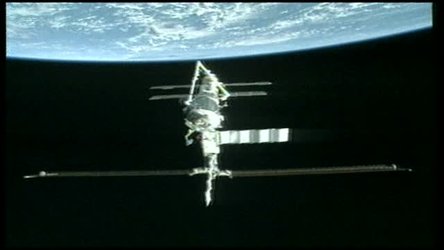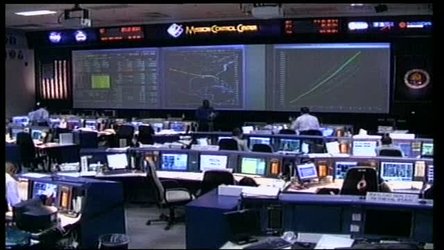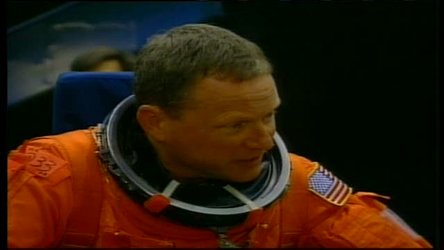Accept all cookies Accept only essential cookies See our Cookie Notice

About ESA
The European Space Agency (ESA) is Europe’s gateway to space. Its mission is to shape the development of Europe’s space capability and ensure that investment in space continues to deliver benefits to the citizens of Europe and the world.
Highlights
ESA - United space in Europe
This is ESA ESA facts Member States & Cooperating States Funding Director General Top management For Member State Delegations European vision European Space Policy ESA & EU Space Councils Responsibility & Sustainability Annual Report Calendar of meetings Corporate newsEstablishments & sites
ESA Headquarters ESA ESTEC ESA ESOC ESA ESRIN ESA EAC ESA ESAC Europe's Spaceport ESA ESEC ESA ECSAT Brussels Office Washington OfficeWorking with ESA
Business with ESA ESA Commercialisation Gateway Law at ESA Careers Cyber resilience at ESA IT at ESA Newsroom Partnerships Merchandising Licence Education Open Space Innovation Platform Integrity and Reporting Administrative Tribunal Health and SafetyMore about ESA
History ESA Historical Archives Exhibitions Publications Art & Culture ESA Merchandise Kids Diversity ESA Brand Centre ESA ChampionsLatest
Space in Member States
Find out more about space activities in our 23 Member States, and understand how ESA works together with their national agencies, institutions and organisations.
Science & Exploration
Exploring our Solar System and unlocking the secrets of the Universe
Go to topicAstronauts
Missions
Juice Euclid Webb Solar Orbiter BepiColombo Gaia ExoMars Cheops Exoplanet missions More missionsActivities
International Space Station Orion service module Gateway Concordia Caves & Pangaea BenefitsLatest
Space Safety
Protecting life and infrastructure on Earth and in orbit
Go to topicAsteroids
Asteroids and Planetary Defence Asteroid danger explained Flyeye telescope: asteroid detection Hera mission: asteroid deflection Near-Earth Object Coordination CentreSpace junk
About space debris Space debris by the numbers Space Environment Report In space refuelling, refurbishing and removingSafety from space
Clean Space ecodesign Zero Debris Technologies Space for Earth Supporting Sustainable DevelopmentApplications
Using space to benefit citizens and meet future challenges on Earth
Go to topicObserving the Earth
Observing the Earth Future EO Copernicus Meteorology Space for our climate Satellite missionsCommercialisation
ESA Commercialisation Gateway Open Space Innovation Platform Business Incubation ESA Space SolutionsLatest
Enabling & Support
Making space accessible and developing the technologies for the future
Go to topicBuilding missions
Space Engineering and Technology Test centre Laboratories Concurrent Design Facility Preparing for the future Shaping the Future Discovery and Preparation Advanced Concepts TeamSpace transportation
Space Transportation Ariane Vega Space Rider Future space transportation Boost! Europe's Spaceport Launches from Europe's Spaceport from 2012Latest
ISS Update September 2003
ISS Update September 2003
Its completion date is now under review due to the Columbia accident.
As the International Space Station is such a large project its construction is taking place in stages over nearly a decade. Shuttles are used to transport the largest elements and the knock-on effect of the Columbia accident and the grounding of the shuttle fleet is to put the station assembly on hold until the shuttle fleet is flying again.
Until then, Russian Progress and Soyuz vehicles are used to exchange astronauts on the Station, and to bring the supplies they need. Also, the size of the permanent crews has been reduced from three to two.
The development of the European contributions to the Station is running according to plan.
In September 2004, the first Automated Transfer Vehicle, also called ATV, is programmed to fly to the ISS.
Also in autumn 2004, ESA will be ready for the launch of its very own Columbus Laboratory on a Space Shuttle, which will permanently attach it to the ISS. This is a multifun
ISS Update September 2003
10:00:40:00
Start A-roll
10:00:41:00
The recent findings of the Columbia accident investigation board conclude that ÒNASA can resume Space Shuttle operationsÓ. But the report also demands changes to shuttle operations and a re-organisation of NASA before the first Orbiter is rolled out onto the launch pad again.
10:00:57:00
ITW John Logsdon ? CAIB Report Hearing
10:01:09:00
The International Space Station will obviously not remain unaffected by these findings
10:01:15:00
The International Space Station, or ISS, is the biggest man-made construction in Space. It is literally the embodiment of a large-scale co-operation between Europe, the US, Russia, Canada and Japan. On completion the Space station is envisaged to measure over a hundred meters and weigh about 450 Tonnes. Its completion date is now under review but before the Columbia accident, it was planned for around 2006/2007.
10:01:42:00
As the International Space Station is such a large project its cons
-
CREDIT
ESA -
LICENCE
ESA Standard Licence
-
Documentary
-
-
-
-
-
-

Actualizacion de la Estacion Espacial Septiembre 2003

The Continuation of Human Spaceflight

ESA Space Highlights 2003

A Tribute to STS-107















 Germany
Germany
 Austria
Austria
 Belgium
Belgium
 Denmark
Denmark
 Spain
Spain
 Estonia
Estonia
 Finland
Finland
 France
France
 Greece
Greece
 Hungary
Hungary
 Ireland
Ireland
 Italy
Italy
 Luxembourg
Luxembourg
 Norway
Norway
 The Netherlands
The Netherlands
 Poland
Poland
 Portugal
Portugal
 Czechia
Czechia
 Romania
Romania
 United Kingdom
United Kingdom
 Slovenia
Slovenia
 Sweden
Sweden
 Switzerland
Switzerland


























